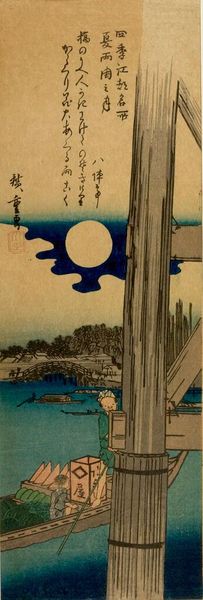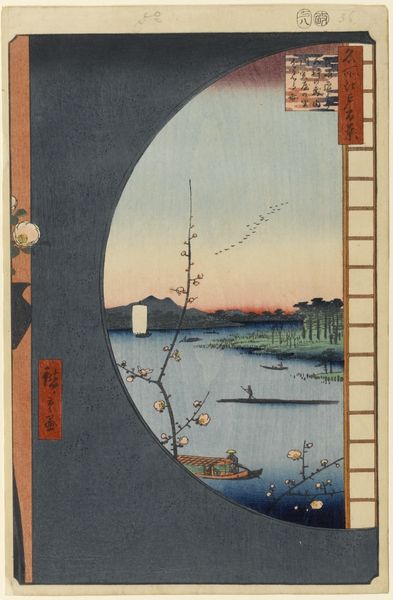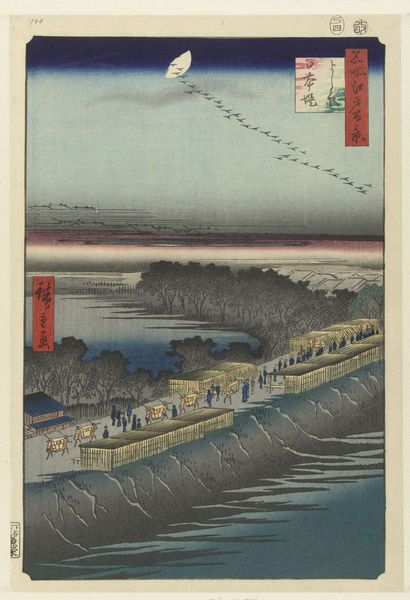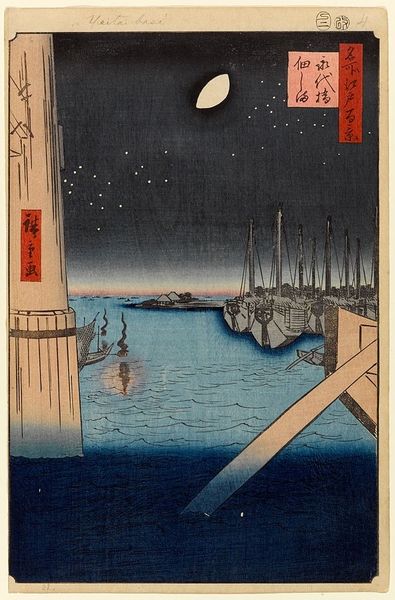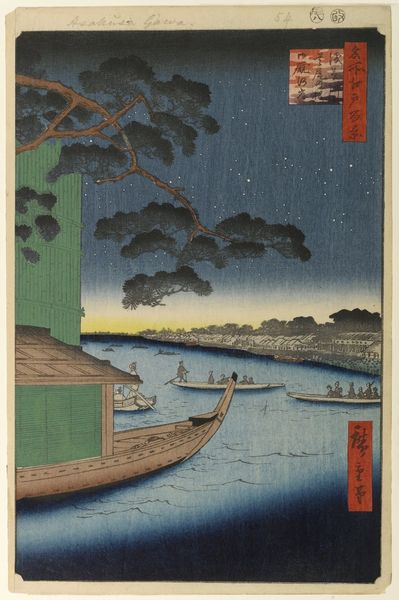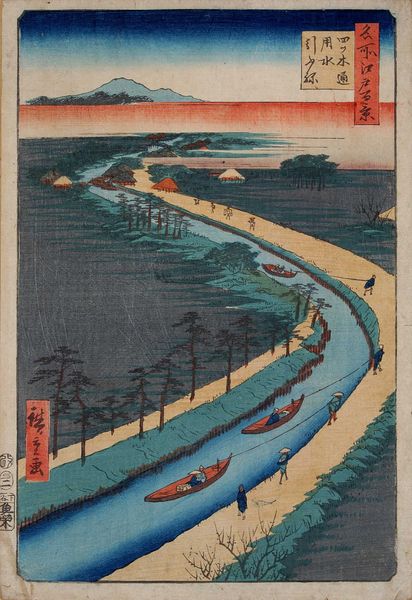
Copyright: Public Domain: Artvee
Editor: This is "The Moon At Shinagawa" from 1884, by Kobayashi Kiyochika. It’s a woodblock print, and the atmosphere is just magical, almost theatrical, with the moon reflecting on the water. What’s your perspective on this piece? Curator: Well, let's consider the materials first. Woodblock prints like this were a significant industry, involving the labor of artists, carvers, printers... It’s not just the artist's vision, but also a whole system of production that informs what we're seeing. Look at the layering of the ink, and consider each layer and how that adds up. What is revealed and obscured? Editor: That's a really interesting point. I tend to focus on the aesthetic elements. I hadn’t thought so much about how it was produced or the other people who would have made it. How did the Ukiyo-e prints circulate? Were they cheap consumer items? Curator: Precisely. Ukiyo-e prints existed within a consumer culture. Think about their availability; they weren’t unique, high-art objects destined for a collector’s walls from day one. Now, regarding "The Moon at Shinagawa" – does the title tell us anything about location or class? Editor: The name "Shinagawa" might have pointed to a known district near Tokyo, maybe? I can see how the scene points towards the presence of the working class, maybe as leisure in lower class neighborhoods was considered acceptable for consumption, like the print itself. Curator: Exactly. We often forget art objects themselves as consumables. Editor: I guess that forces you to really see the everyday. I appreciate this expanded insight. Curator: And by acknowledging the networks of creation and consumption, it opens up a new view.
Comments
No comments
Be the first to comment and join the conversation on the ultimate creative platform.



